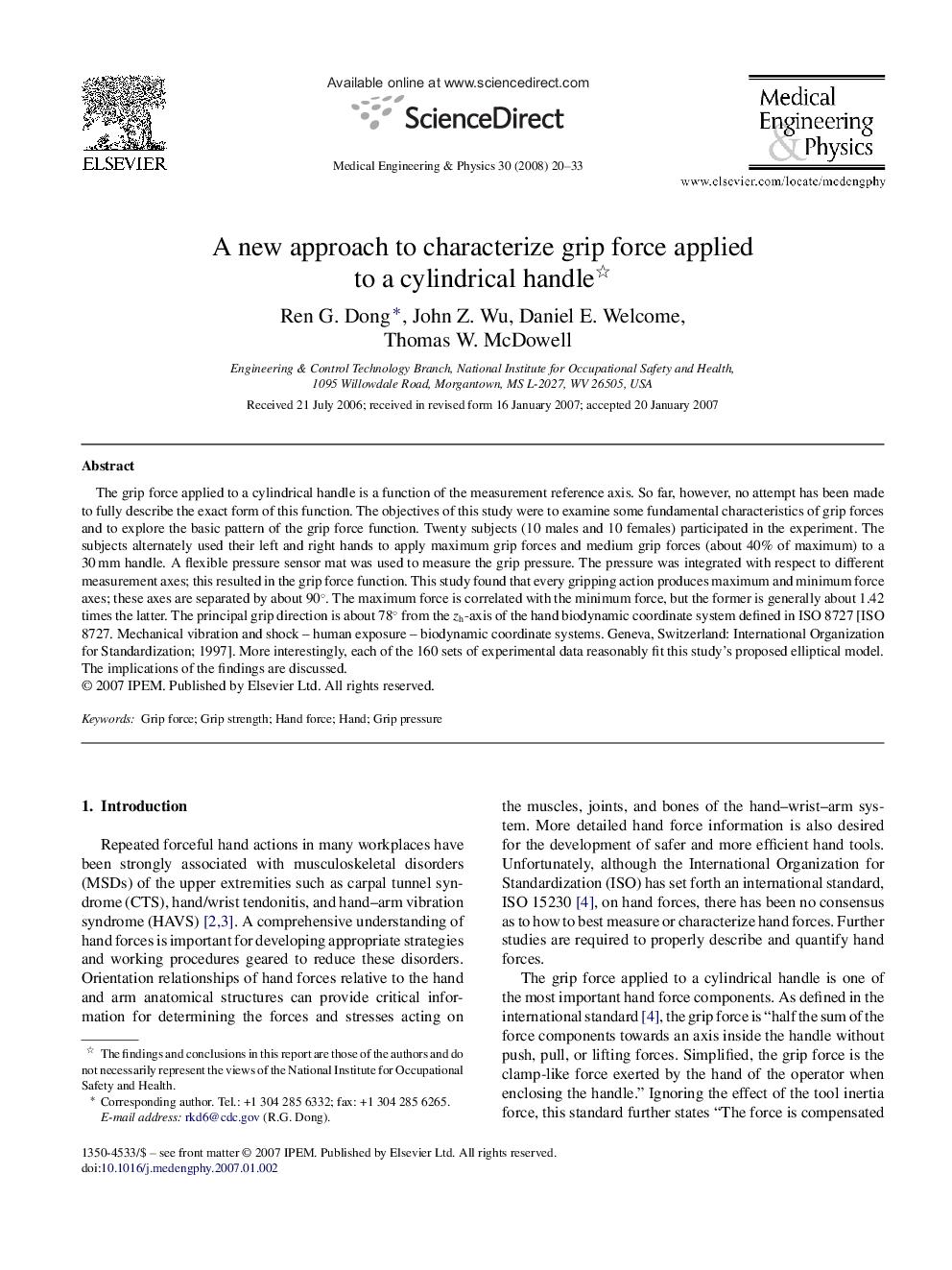| Article ID | Journal | Published Year | Pages | File Type |
|---|---|---|---|---|
| 876617 | Medical Engineering & Physics | 2008 | 14 Pages |
The grip force applied to a cylindrical handle is a function of the measurement reference axis. So far, however, no attempt has been made to fully describe the exact form of this function. The objectives of this study were to examine some fundamental characteristics of grip forces and to explore the basic pattern of the grip force function. Twenty subjects (10 males and 10 females) participated in the experiment. The subjects alternately used their left and right hands to apply maximum grip forces and medium grip forces (about 40% of maximum) to a 30 mm handle. A flexible pressure sensor mat was used to measure the grip pressure. The pressure was integrated with respect to different measurement axes; this resulted in the grip force function. This study found that every gripping action produces maximum and minimum force axes; these axes are separated by about 90°. The maximum force is correlated with the minimum force, but the former is generally about 1.42 times the latter. The principal grip direction is about 78° from the zh-axis of the hand biodynamic coordinate system defined in ISO 8727 [ISO 8727. Mechanical vibration and shock – human exposure – biodynamic coordinate systems. Geneva, Switzerland: International Organization for Standardization; 1997]. More interestingly, each of the 160 sets of experimental data reasonably fit this study's proposed elliptical model. The implications of the findings are discussed.
